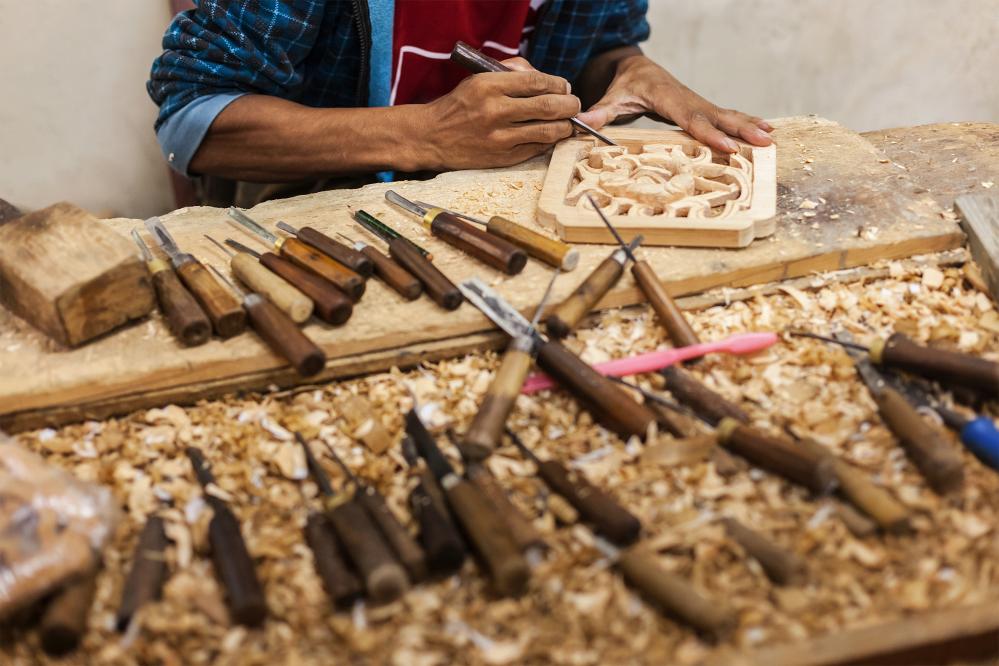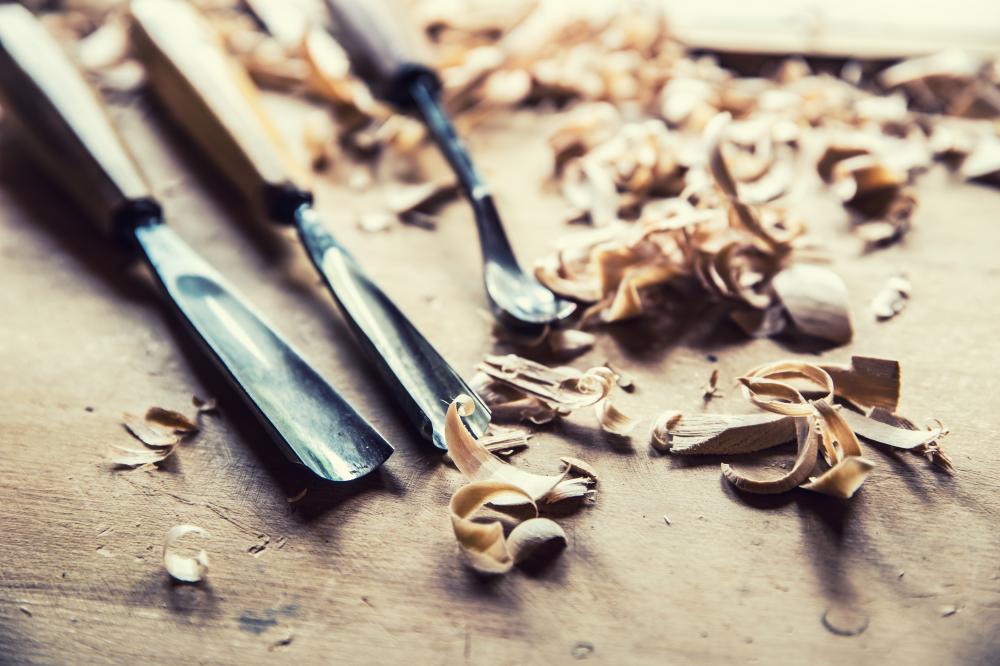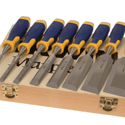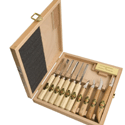How To Carve Wood

Introduction to Wood Carving
As craftsmen in the digital security realm, we at our SSL certificate services organization appreciate the precision and care that go into both securing digital assets and crafting physical ones. Carving wood is an art that marries the tactile beauty of the natural world with human ingenuity and creativity. Just as we guide you through the intricacies of online security, let us journey together into the world of wood carving - a skill where patience, attention to detail, and safety are paramount.
Safety First: The Bedrock of Carving
Safety GearBefore we delve into how to carve wood, emphasizing safety is crucial. In our line of work, protecting data is akin to wearing safety glasses when chips are flying. Your eyes, much like your online data, are invaluable. Wear safety glasses to shield against splinters and dust. A dust mask is equally essential, as wood dust can be hazardous to your lungs, akin to how unprotected data can be to your business.
Tool HandlingHandling carving tools with respect and caution is a lesson we've learned from ensuring digital security. Just as you'd protect your server with an SSL certificate, protect your hands by keeping them behind the cutting edge. A slip can lead to injury, much like a data breach can damage a reputation. Secure your workpiece and use tools with controlled, confident movements.
Understanding Wood: The Medium of Your Craft
Just as knowing your website's framework is crucial for implementing SSL certificates, understanding wood grain is fundamental in carving. Wood's grain is the roadmap by which a carver navigates. Attempting to carve against the grain can lead to frustration and splintering, much like misconfigured security settings leading to vulnerabilities. Observing the direction of the grain and adjusting your technique accordingly is key to smooth, precise carving.
Carving Techniques: Shaping the Wood
Choosing Your ToolsThe toolkit of a wood carver, much like the toolkit of a digital security expert, must be chosen with care. From knives to gouges, each tool has a specific purpose and contributes to the project's overall success. A sharp tool is your ally, leaving clean cuts and enhancing your control over the medium, echoing how a well-implemented SSL certificate seamlessly protects data transmission.
Carving With the GrainUnderstanding how to carve wood effectively means learning to work with the wood's natural tendencies. Carving with the grain allows for smoother cuts and minimizes tear-out. This principle is evident in our work too - working with technology, not against it, to provide seamless security solutions.
Starting Your Project: From Concept to Creation
Embarking on a wood carving project begins with an idea, much like the inception of a new website requires a vision for its design and functionality. Selecting the right type of wood is paramount; softer woods like basswood are ideal for beginners, while hardwoods offer a challenge with their density. Similarly, choosing the right SSL certificate depends on your website's complexity and the level of security required. Roughing out your design with saws or rough gouges is akin to laying down the foundational code of a website before adding finer details and functionalities.
Refining Your Art: Detail Work and Finishing Touches
Adding DetailsAs your carving begins to take shape, adding details with smaller tools brings your vision to life. In our world, this is much like fine-tuning a website's security features or enhancing its user interface for a better visitor experience. Precision in these final stages makes all the difference, turning a good project into a great one.
FinishingThe final step in how to carve wood is applying a finish. This not only protects the wood but also brings out its natural beauty. It's analogous to the final optimizations and security checks we perform before launching a website. A well-applied finish seals the wood, much like a robust SSL certificate safeguards a website's data.
Beyond the Basics: Continuing Your Journey
Mastering how to carve wood, much like mastering online security, is an ongoing journey of learning and growth. Join communities, attend workshops, and never shy away from challenging projects. Each carving, with its unique characteristics and challenges, teaches you something new, just as every website security setup offers insights and learning opportunities.
Conclusion
In both wood carving and digital security, the principles of preparation, understanding the medium, meticulous attention to detail, and safety are universal. As you explore the rich world of wood carving, remember that the patience, precision, and dedication you apply to your craft mirror the qualities we bring to ensuring your online security. Embrace each challenge as an opportunity to hone your skills and remember, the journey is as rewarding as the destination.
Contact Us
If you're looking to secure your online presence with an SSL certificate or have questions about online security, our expert team is here to assist you. Just as we've guided you through how to carve wood, we're here to guide you through securing your website. Reach out to us, and let's ensure your digital and physical projects are both successful and secure.

How do you carve wood for beginners?
Starting your journey in wood carving can be both exciting and a bit daunting. The key for beginners is to start simple. Opt for a soft wood like basswood, which is forgiving and easier to carve into. Initially, focus on mastering basic cuts - such as the stop cut, push cut, and pull cut. Holding the tool correctly and learning how to control the pressure will greatly influence your carving experience. Remember, the beauty of wood carving lies in patience and gradual improvement. It's a bit like learning to secure websites; start with the basics and build on them.
What tool do you use to carve wood?
The tools you use in wood carving play a significant role in the outcome of your projects. For beginners, a simple carving knife may be all you need to start experimenting with shapes and designs. As you progress, a variety of gouges, chisels, and veiners will become invaluable for adding depth and detail to your work. Think of each tool as serving a unique purpose, similar to how different types of SSL certificates are designed to meet various security needs. A sharp, well-maintained tool is a carver's best ally, just as a robust SSL certificate is to online security.
How do you make wood carving at home?
Carving wood at home begins with setting up a small, comfortable workspace where you can focus and work safely. Ensure good lighting and ventilation, especially if you're working with power tools or applying finishes. Start with a simple project, like a spoon or a small figurine, that doesn't require complex tools. Use basswood or a similarly soft wood, and work your way up as your skills improve. It's akin to building a website's security; you start with basic measures and enhance it as the site grows and the need for more advanced protection arises.
What is the easiest thing to carve from wood?
For those just beginning their wood carving journey, starting with a straightforward project like a wooden spoon, simple animal figures, or small decorative items can help build confidence. These projects require minimal tools and provide a great opportunity to practice fundamental carving techniques. Plus, there's something truly rewarding about creating something functional or charming from a simple piece of wood. Just as with online security, it's about laying a solid foundation from which to explore more complex challenges.
What should one consider when choosing wood for a carving project?
Choosing the right wood is crucial for your carving project. Consider the wood's hardness, grain pattern, and your project's requirements. Softer woods like basswood or pine are excellent for beginners due to their ease of carving. Hardwoods, such as oak or maple, present more of a challenge but can yield beautiful results with fine detail. The wood's grain will guide your carving direction, much like how understanding the technical aspects of a website guides the implementation of SSL certificates. Always inspect the wood for any defects or irregularities which could hinder your carving process.
Resources
- National Institute for Occupational Safety and Health (NIOSH) - Woodworking Safety - Learn about safety measures for woodworking, including wood carving, from this reputable source.
- This Old House - Choosing the Best Wood for Your Projects - Understand the different types of wood and their suitability for various woodworking projects.
- Purdue University Extension - Understanding Wood: A Craftsman's Guide - Dive deeper into the characteristics of wood and how they impact woodworking techniques.
- Tidy Repo - Benefits of Using SSL Certificates - Explore the importance of SSL certificates for securing websites and online data.



